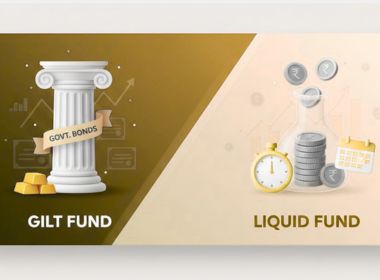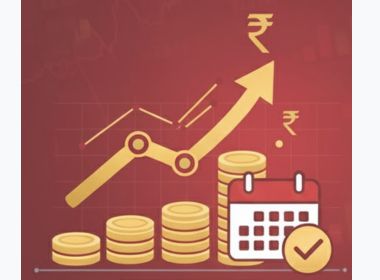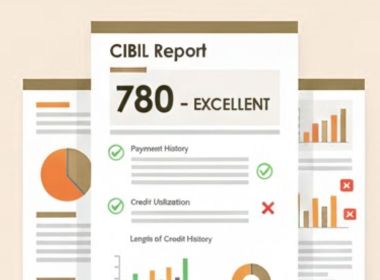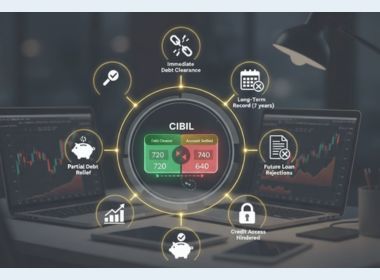Search Suggestions
- Gold Loan
- Money Transfer
- Mutual Funds

NACH vs. ECS Explained: Full Forms, How They Work, and Their Key Differences
When it comes to automated payments like EMIs for a personal loan or vehicle loan, many people encounter terms like NACH and ECS. But what do they actually mean, and how do they work? Understanding what is NACH and what is ECS can help you make better financial decisions and avoid payment failures or delays. Both are digital payment systems that authorize recurring debits from your bank account to ensure timely transactions. Whether you're repaying a vehicle loan, paying insurance premiums, or investing through SIPs, these systems play a vital role in maintaining financial discipline.
Table of Content
The NACH full form is National Automated Clearing House, while the ECS full form is Electronic Clearing Service. At a glance, they might seem similar since both allow automated debits, but they have different mechanisms, operational speeds, and levels of efficiency. With technological advancements,
NACH has largely replaced ECS in many sectors due to its faster and more secure framework. In this blog, we will dive into the full forms, understand how NACH works, explore how ECS works, and analyze the difference between NACH and ECS. By the end, you'll have a clear understanding of which option suits your needs best for recurring payments like EMIs.
What is NACH?
NACH is National Automated Clearing House, is a centralized, web-based platform launched by the National Payments Corporation of India (NPCI). It facilitates high-volume, repetitive financial transactions such as salaries, pensions, subsidies, EMIs, and utility bills. Introduced as a modern alternative to ECS, NACH is widely used for recurring payments due to its speed, transparency, and accuracy.
What is ECS?
ECS is an Electronic Clearing Service. The Reserve Bank of India introduced an older system to automate bulk transfers for payments like dividends, pensions, and loan EMIs. ECS is divided into two types: ECS Credit (used by institutions to credit funds to multiple beneficiaries) and ECS Debit (used by institutions to debit customers for recurring payments).
How NACH Works
Here’s a simplified explanation of how NACH works:
- The customer signs a NACH mandate authorizing the service provider (like a lender) to debit a fixed amount at regular intervals.
- This mandate is verified electronically and submitted to the customer’s bank via NPCI.
- Once approved, the bank processes the recurring debit request on scheduled dates.
- The transaction status (success or failure) is updated in near real-time.
NACH supports Aadhaar-based and account-based transactions, offers same-day processing, and works even on non-working days, making it ideal for EMI payments like personal loans and vehicle loans.
How ECS Works
Understanding how ECS works is important for comparing both systems:
- The customer submits a physical ECS mandate to the service provider and their bank.
- The service provider sends the transaction data to the bank, which is then processed in batches.
- Transactions are not real-time and can take 2–4 days for settlement.
- ECS is location-dependent and varies across different banks and clearinghouses.
ECS has limited operational hours and is more prone to rejections due to manual verification errors.
Key Difference Between NACH and ECS
Feature | NACH | ECS |
Full Form | National Automated Clearing House | Electronic Clearing Service |
Speed | Same-day processing | 2–4 days processing |
Coverage | Pan-India | Location-specific |
Mandate Process | Digital and secure | Manual, paper-based |
Error Rate | Very Low | Comparatively Higher |
Tracking Status | Real-time Updates | Delayed Updates |
Ideal For | Personal Loan, Vehicle Loan, SIPs | Older Recurring Payments |
Launched By | NPCI | RBI |
Usage | Widely operated and growing | Phasing out in many sectors |
Both NACH and ECS have played vital roles in the evolution of India’s automated payment systems. However, in today’s fast-paced financial landscape, NACH stands out as the superior choice due to its speed, efficiency, and wider adoption. Whether you're repaying a personal loan or a vehicle loan, choosing NACH ensures timely payments, better tracking, and fewer errors. Meanwhile, ECS still exists in some sectors but is gradually being replaced due to its outdated and slower framework.
Suggested Read: What is ACH? Full Form, Mandate, and Charges Explained
Now that you know the difference between NACH and ECS, along with how NACH works and how ECS works, you can make an informed choice for managing your recurring payments. Always check with your bank or financial institution to see which system they support and choose the one that best fits your financial habits.
- Instant Personal Loan
- EMI Calculator
- Document Required
- Track Personal Loan
- Interest Rate
- Procedure and Eligibility
CATEGORIES
OUR SERVICES
-

Credit Score
-

Gold Loan
-

Personal Loan
-

Cibil Score
-

Vehicle Loan
-

Small Business Loan
-

Money Transfer
-

Insurance
-

Mutual Funds
-

SME Loan
-

Corporate Loan
-

NCD
-

PAN Card
-

NPS
-

Custom Offers
-

Digital & Cashless
-

Milligram Rewards
-

Bank Mapping
-

Housing Finance
-

#Big Business Loan
-

#Gold Loan Mela
-

#Kholiye Khushiyon Ki Tijori
-

#Gold Loan At Home
-

#Sunherisoch
RECENT POSTS

Gilt Fund vs Liquid Fund: Full Form, Meaning & SIP Guide
Know More
XIRR in Mutual Funds & SIP: Full Form, Meaning, Formula and How to Calculate
Know More
7 Key Factors to Consider Before Taking an SME Loan
Know More
Difference Between Black Gold and Gold: Everything You Need to Know
Know More
NPS vs EPF: Everything You Need to Know About Retirement Savings
Know More
What is a Credit History? Impact on Credit Score and Credit Report
Know More
Loan Closure Vs. Loan Settlement: Meaning, Benefits, and CIBIL Score Impact
Know More
Is Silver the New Gold? A Look at 2025 Price Trends
Know More
What Are the Various Types of Equity Funds and How They Work?
Know More
Why Are Gold Loans Becoming the Most Preferred Financial Option in 2025?
Know MoreFIN SHORTS

What Are Co-Pay and Deductibles in Insurance Policies?
Know More
Should You Take a Loan Against Your Mutual Fund or SIP?
Know More
Top 5 Best Mid-Cap Mutual Funds to Watch in 2026
Know More
Are Personal Loans Right for Retirees? Key Points to Consider
Know More
What Happens to a Personal Loan After the Borrower Dies?
Know More
Best Loan Choices for Credit Scores of 580 and Below
Know More
7 Reasons Why a Gold Loan Is the Best Option for Small Businesses
Know More
10 Reasons Why People in India Prefer Physical Gold
Know More
Real Estate vs Gold: Which Is a Better Investment in India?
Know More
10 Common Mistakes That Make Investors Lose Money in Mutual Funds
Know More
10 Reasons Why Gold Has So Much Appeal in Uncertain Times
Know More
7 Ways Settling Debt Can Impact Your CIBIL Score
Know More- South +91 99469 01212
- North 1800 313 1212




